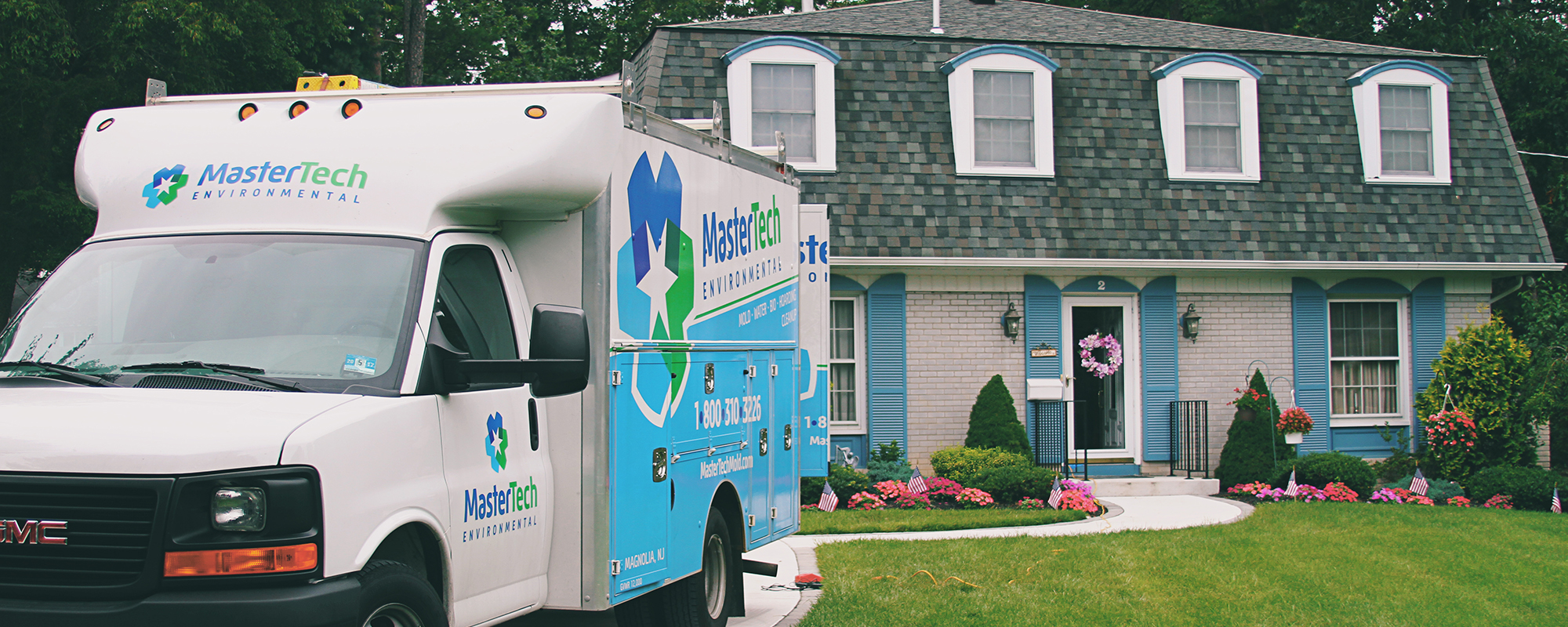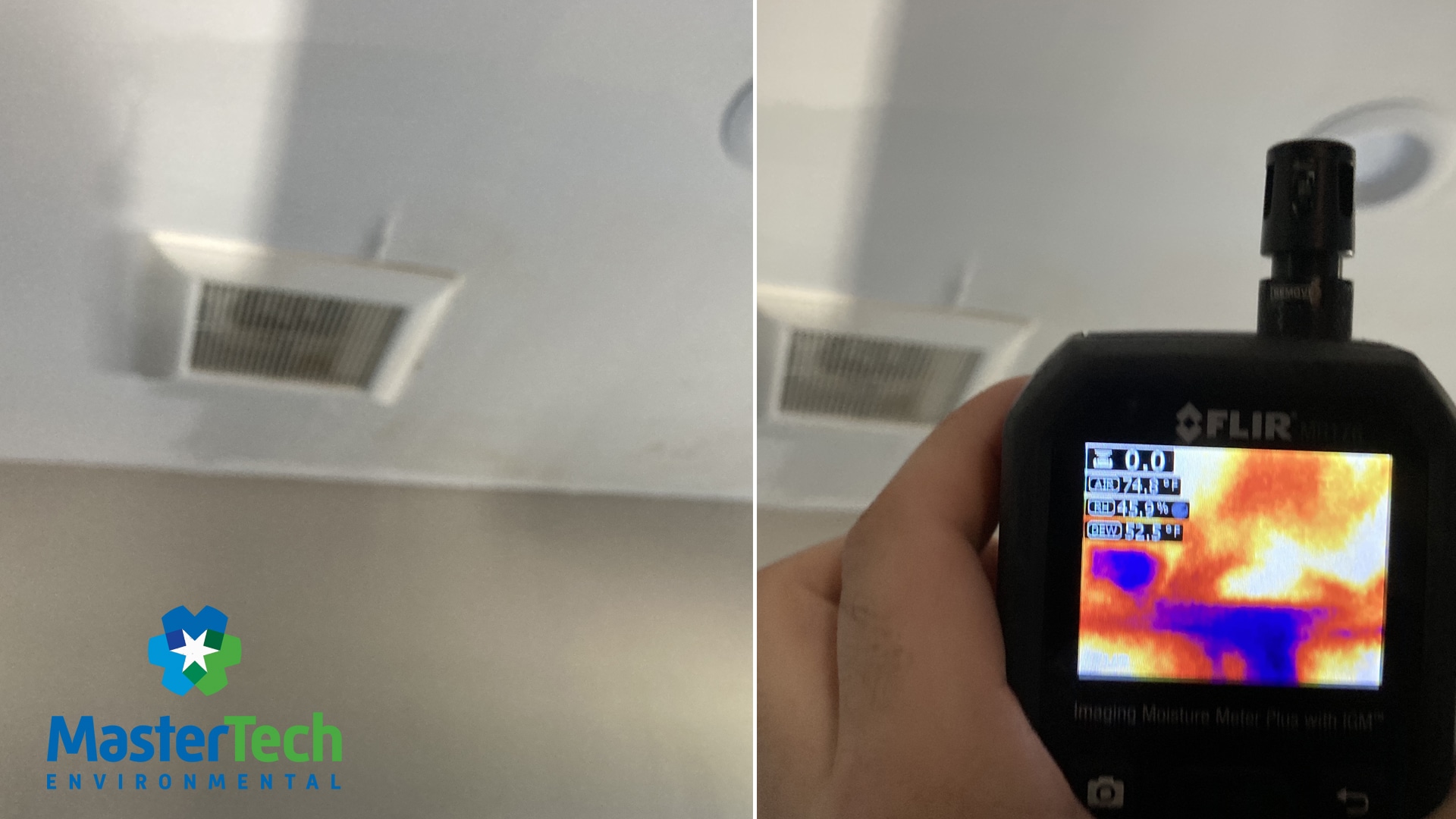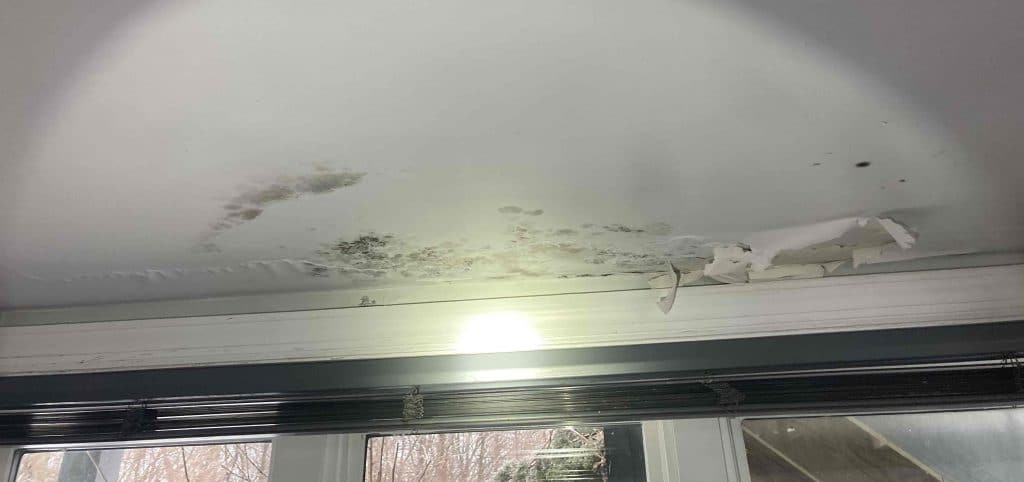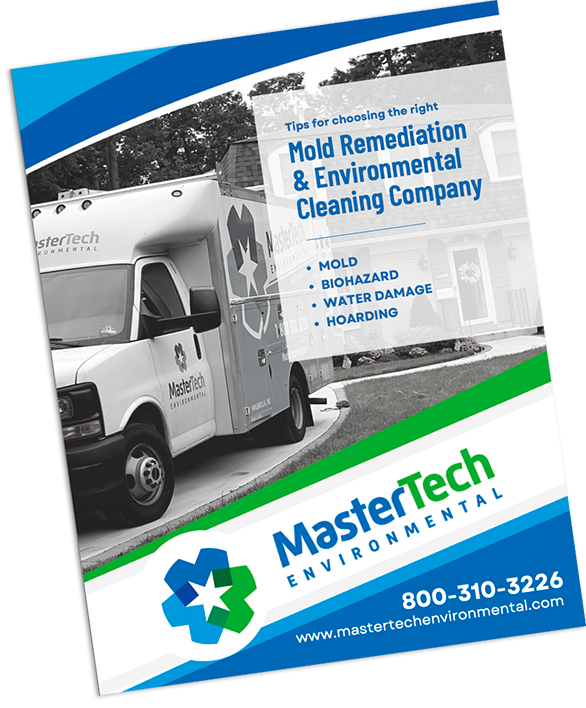
Ceiling water leaks and ceiling mold are most commonly the result of a roof leak, plumbing issues, ductwork condensation, chimney issues, leaky skylights, siding issues or other issues from above. The nature of a water leak usually means that the water damage might be a lot worse than it might seem at the surface. Leaks (especially small, slow leaks) usually don’t become apparent right away. A visibly apparent water stain or obvious water dripping at the ceiling is just the tip of the iceberg because it means the ceiling is saturated enough to present visual indicators of an issue. By the time you realize you have a ceiling leak, it often means that the water has already soaked through your building materials and potentially caused some serious underlying water damage.
Managing a Ceiling Water Leak and Preventing More Damage
If you realize you have a water leaking from your ceiling, it is important to address it in a timely manner – stop the leak and dry up the water. Unaddressed ceiling leaks can lead to widespread water damage, cause serious mold growth, compromise structural integrity and leave property owners with a costly repair. When it comes to leaks, early detection and early response is key. Water from the leak needs to be extracted and dried out immediately, damp and non-salvageable materials and contents need to be removed, and the leak needs to be effectively repaired. Lack of proper water damage cleanup or failure to resolve the leak in a timely manner can lead to serious property damage and widespread mold contamination throughout the New Jersey property.
Water can easily flow to and soak into any of your porous building materials once it is loose in your property. It can be easy to overlook a leak, especially since most plumbing in New Jersey properties are covered by building materials like drywall. Whether it is a plumbing leak or roof leak, by the time you discover it, it may have already caused a great deal of hidden mold growth and water damage. All too often, in the case of hidden leaks, it can take a while before the leak soaks through your building materials and become visually obvious. Because of this, by the time you see dampness from a leak, the leak may have caused more hidden mold growth and water damage than meets the eye. It may be necessary to contact professional to properly assess the space to determine the full extent of the problem, uncover additionally hidden mold growth and water damage, and effectively address the issue.

Inspecting for Mold Growth after a Ceiling Water Leak
When porous building materials like wood and drywall become exposed to moisture for an extended period of time, mold can develop and spread throughout an area. Ceiling mold after a water leak in the ceiling is often common and requires professional attention. Like water, mold is often hidden in ceiling voids and covered up by building materials. It can be difficult to diagnose the full extent of a mold problem without the help of a professionally certified mold inspector in New Jersey. Mold inspectors are specially trained in mold detection and have experience dealing with mold caused by ceiling leaks.
If you suspect that a leak could have left you with a mold problem, you should contact a local mold inspection company in New Jersey to conduct a detailed assessment. Mold inspections include a thorough visual assessment with moisture mapping and thermal imaging. With advanced moisture detection equipment like moisture meters, infrared cameras and hygrometers – an inspector can identify any underlying moisture buildup that can cause and sustain fungal growth. Mold testing following a ceiling leak can help to determine if a mold problem exists and if the mold has compromised your indoor air quality.

How to Remove Ceiling Mold after a Water Leak
Depending on the severity of the ceiling leak and the extent of the mold contamination, mold removal and water damage cleanup should be completed by a professional. Mold is tricky and difficult to thoroughly remove without the right experience and equipment. Mold is a biological contaminant that requires special retrieval, removal and disposal in accordance with specific industry standards. If a moldy environment is disturbed without the proper containment, airborne mold spores can spread and cause cross contamination, additional property damage and potential health risks. Mastertech’s local mold remediation experts in South Jersey are specially trained to properly handle mold, minimize risk of cross contamination, and perform a thorough remediation to return clean and safe conditions for you and your family. We practice strict safety quality control, adhere to specific safety regulations, and follow industry standard remediation procedures.
Every Mastertech mold remediation is performed under HEPA-filtered, negative air containment to prevent cross-contamination and maintain a safe indoor air quality. We carefully remove and properly dispose of all moldy and non-salvageable materials. All surface spores and embedded mold roots are actively removed through a process of HEPA vacuuming, antimicrobial application, scrubbing, oxidative root removal and re-HEPA vacuuming. Mastertech Environmental offers a 5-year, mold-free warranty with each remediation. Every cleanup includes a mold prevention guide with moisture control recommendations to avoid future re-growth. If a water leak from your ceiling has left you with a mold problem, contact a licensed and trained professional near you today.


